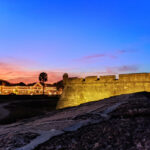OMG, the Fountain of Youth in St Augustine is both hilarious and awesome. It’s one of our most popular tourist attractions and I’ll tell you why in a minute. If you’re planning to come visit, or if you’re a local with friends and family coming to town, chances are it’s going to come up to visit the Fountain of Youth. I’ve got the full scoop for you so you can make an informed decision.
Keep in mind that I travel a lot and get to experience all kinds of interesting places, including archaeological parks and exhibitions, so my point of view is rather discerning, and personally, I know that I’m a sarcastic individual. Just remember that as you read. Ultimately, the Fountain of Youth in St Augustine is actually really wonderful, but it’s not my go-to for a fun day with EVERY visitor.
If you have questions about visiting THE Fountain of Youth in St Augustine, please leave a comment or send us a note. We love talking about our town and are always happy to share more!
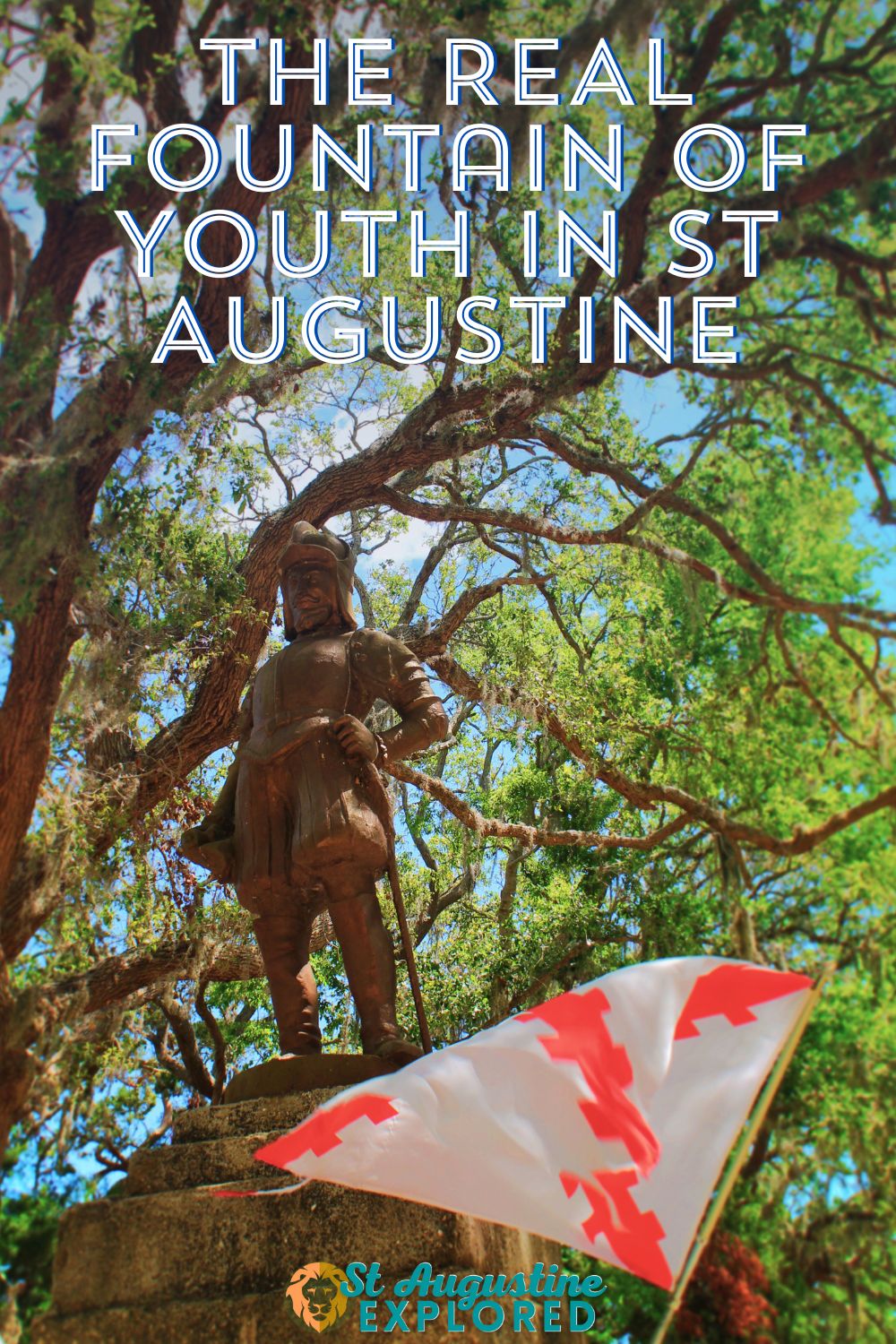
Things to do at Fountain of Youth Archeological Park
The Fountain of Youth Park is a historical and archaeological park located here in St. Augustine, Florida. It is believed to be the site where Spanish explorer Juan Ponce de Leon first landed in Florida in 1513 in search of the Fountain of Youth. For all purposes, let’s just say that it is indeed where our pal Juan did land.
The park covers 15 acres of land and includes various exhibits and attractions, including a reconstructed Timucua Indian Village, a planetarium, a replica of a 16th-century Spanish galleon, and various historical and cultural exhibits. The park also features a natural spring that visitors can drink from, which is believed to be the Fountain of Youth.
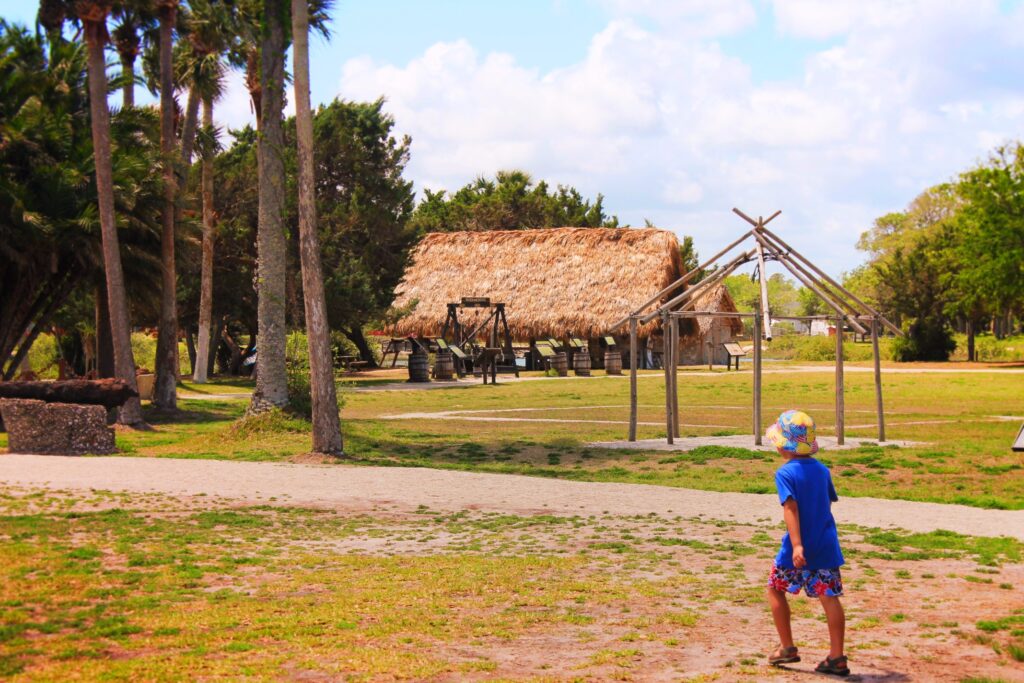
The Archaeological Park
One of the main attractions of the Fountain of Youth in St Augustine is the Archaeological Park, which is home to the remains of the original 1565 Spanish settlement of St. Augustine. Visitors can check out the site and learn about the history of the area, including the interactions between the Spanish and the native Timucua Indians.
Note: I haven’t been to a lot of sites in North Florida that focus on pre-Spanish indigenous culture and history, so I don’t know how historically accurate all elements of the Fountain of Youth exhibits are. When we go again I’ll take notes and share anything that I think is either really insightful or inaccurate after more research.
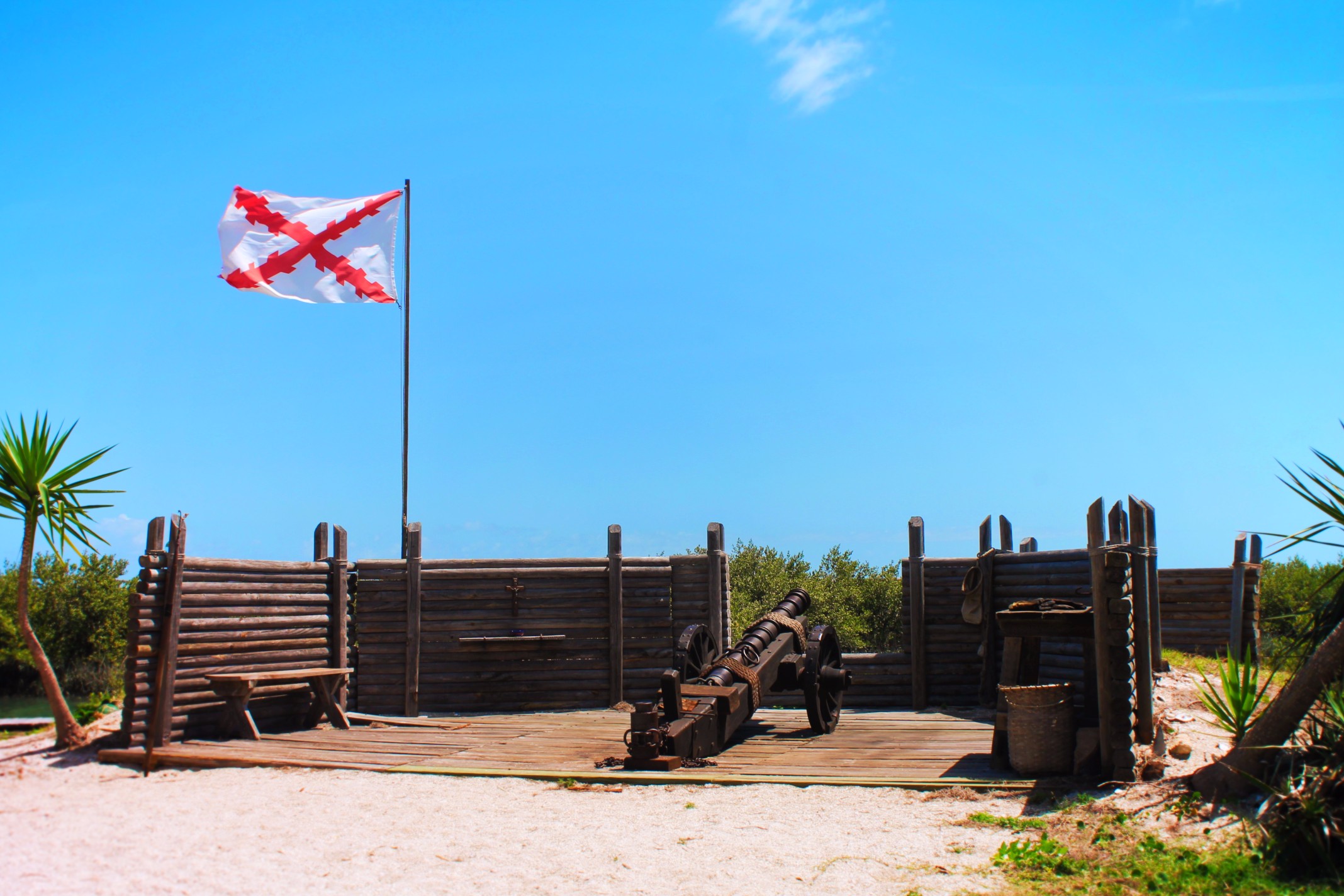
Discovery Globe and Learning Attractions
Another popular attraction at the park is the Discovery Globe, a 40-foot rotating globe that showcases the history of exploration and discovery throughout the world. The park also hosts daily demonstrations of historic weapons and cannons, as well as reenactments of Spanish colonial life.
Visitors can also enjoy the beautiful natural surroundings of the park, including a waterfront view of Matanzas Bay and various gardens and short nature trails. The park is a popular destination for families, history buffs, and anyone interested in Fountain of Youth lore or the quirky side of St. Augustine and the surrounding area.
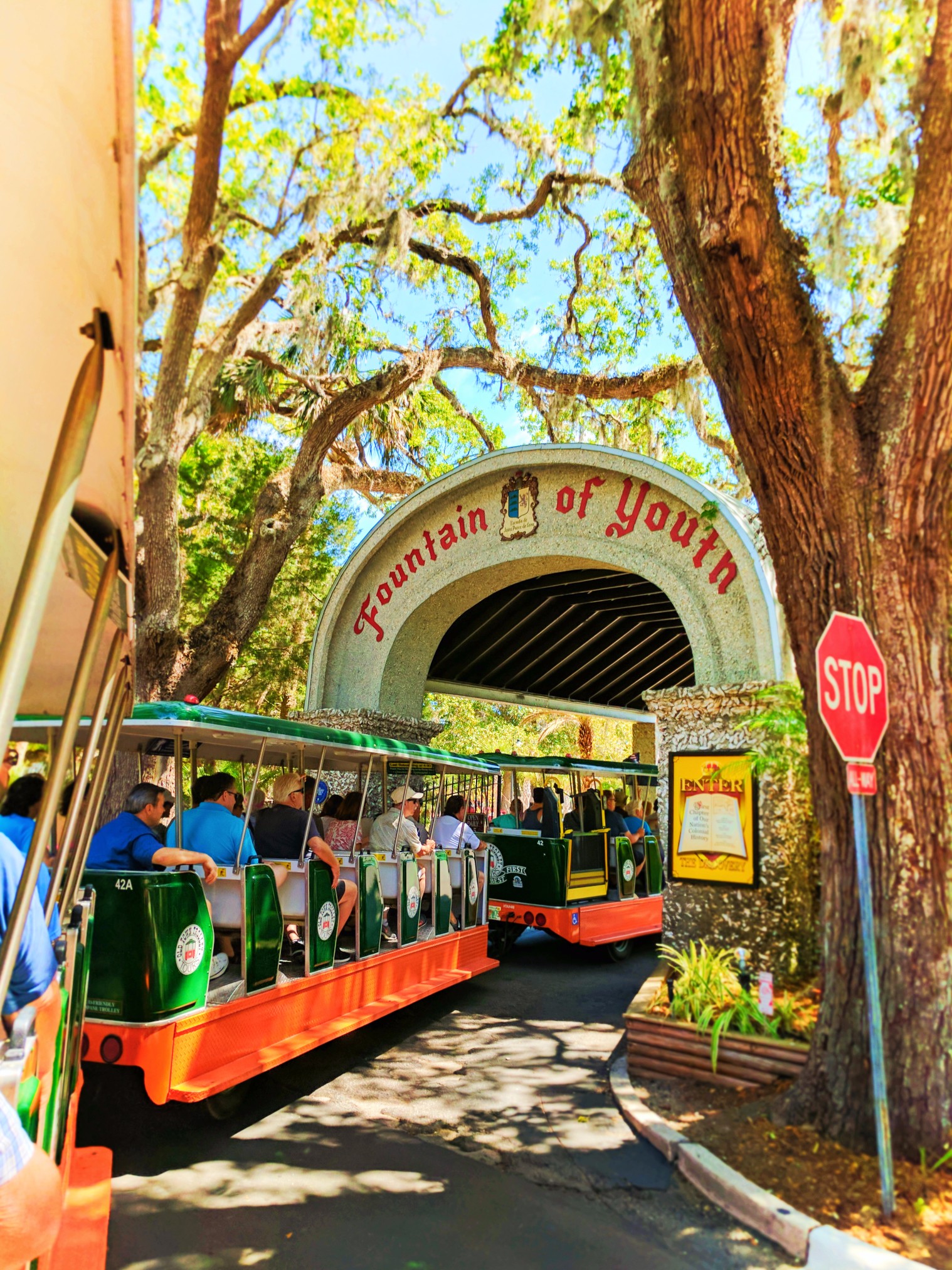
Peacocks at the Fountain of Youth in St Augustine
What would a quirky, unique attraction be without peacocks? There are TONS of peacocks at the Fountain of Youth in St Augustine. Whether you are hoping to see amazingly colorful birds fully fanned out or maybe a lone, quiet, pure white peacock, they’re all here. As you approach the Fountain of Youth on Magnolia Avenue (the Prettiest Street in the USA), keep your eyes peeled so you don’t run over a peacock. They tend to wander out of the Fountain of Youth area, but stick to the Uptown neighborhood here in St Augustine.
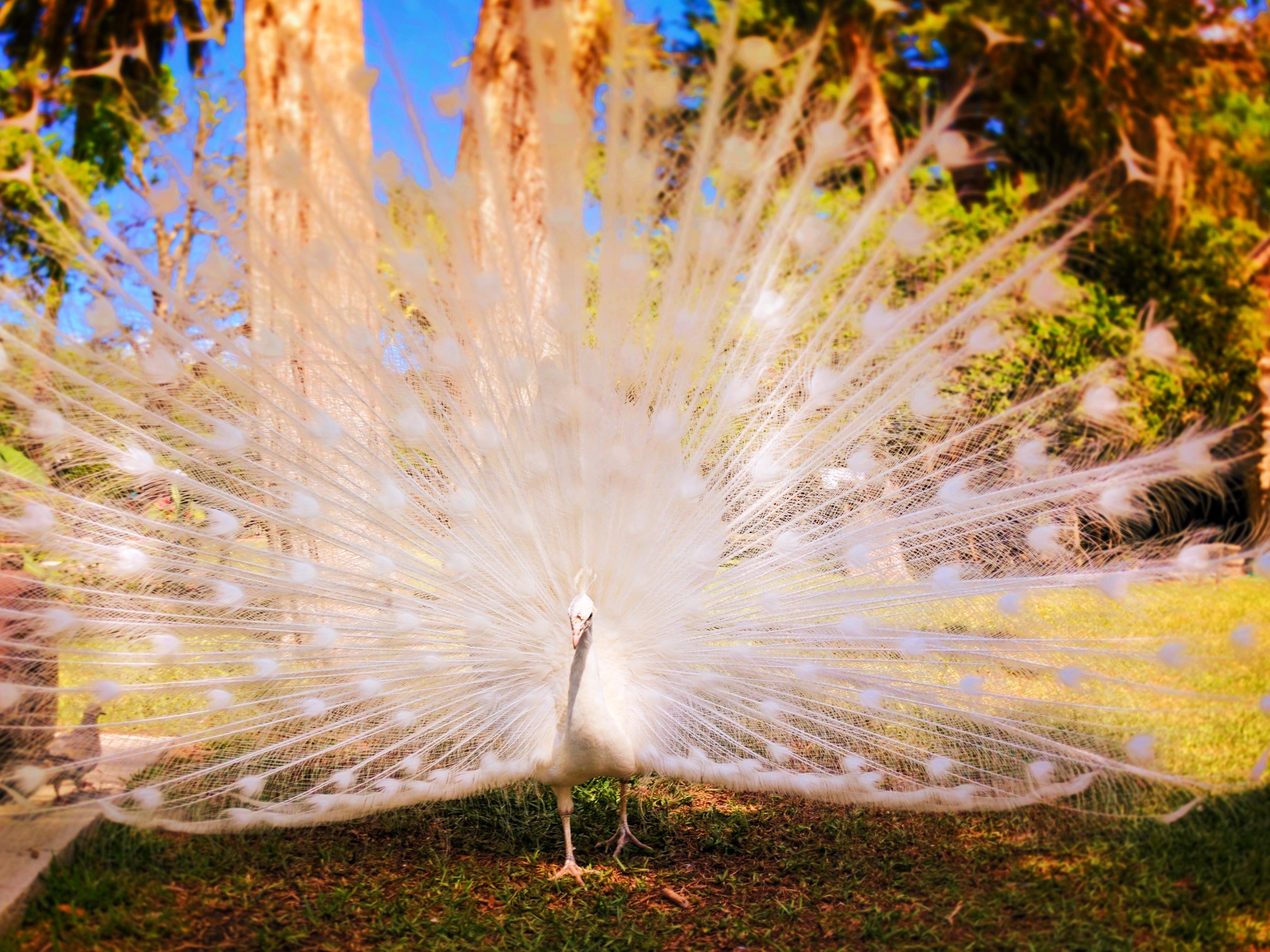
Is the Fountain of Youth in St Augustine Legit?
The Fountain of Youth is a legendary spring that is said to possess rejuvenating properties, giving those who drink from it a renewed sense of youth and vitality, aka staying forever young. While many cultures around the world have their own legends of a fountain of youth, one of the most famous is associated with the state of Florida in the United States, and then specifically with our spring here in St Augustine.
According to legend, the Fountain of Youth was first discovered by the Spanish explorer Juan Ponce de León in 1513. It’s said that Ponce de León was in search of the “Fountain of Youth” when he first landed in Florida, which he believed to be a magical spring that would restore his youth and vigor. While there is little evidence to support this legend, it has become a popular part of Florida’s history and folklore, and we love to add this special twist to EVERYTHING possible.
Is what we have here in St Augustine the actual fountain of youth? Does it actually make you younger or keep you alive? Well, maybe… but no, not really. There are indeed minerals in the spring here that may be beneficial to your health, but not magical. I think the water from the spring at the Fountain of Youth tastes gross and smells bad (like sulfur and our kids won’t drink it), but maybe that’s the smell of the magic. Who knows.
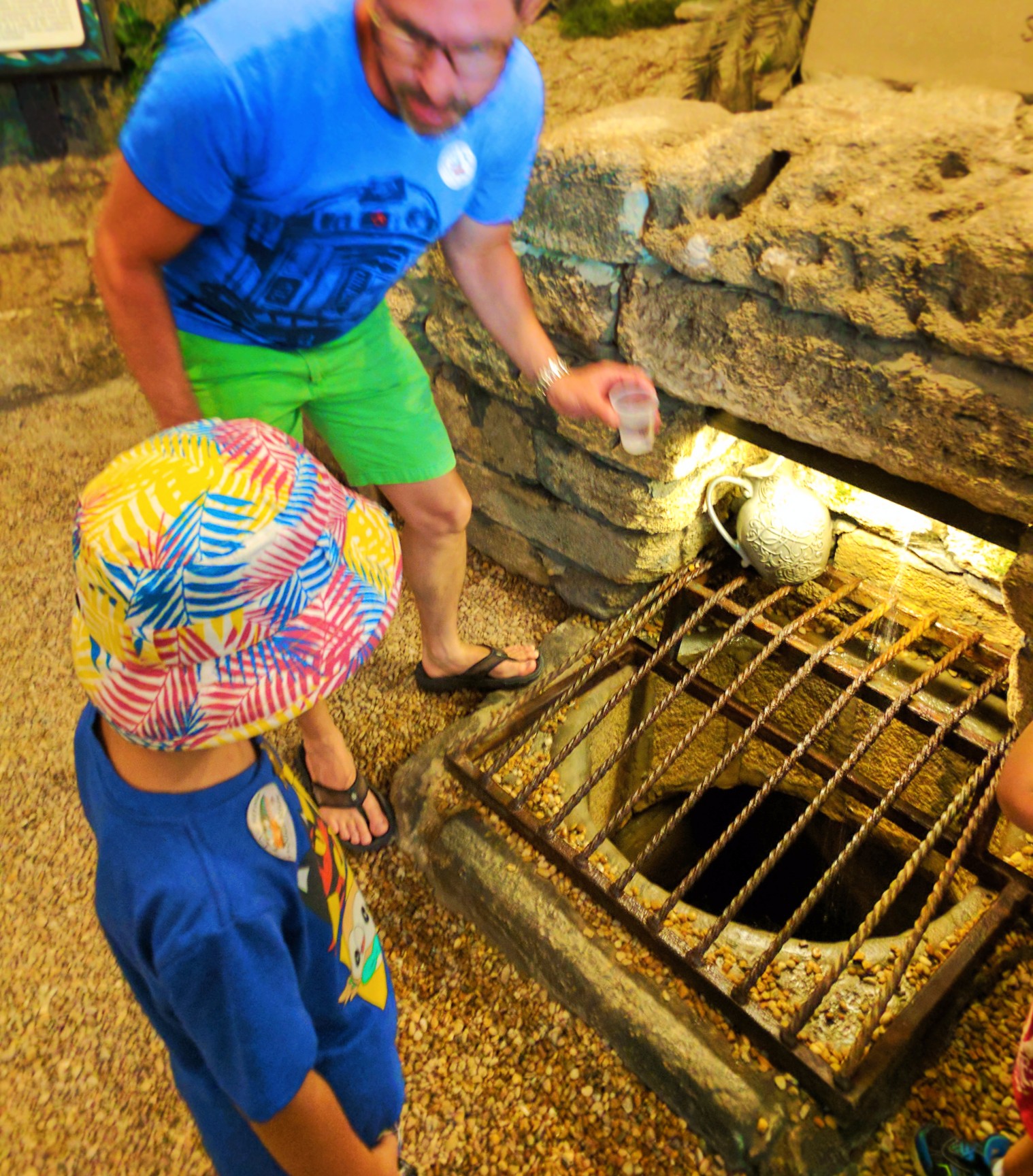
The Scoop on Ponce de Leon’s Fountain of Youth
The story of Ponce de León’s quest for the Fountain of Youth began in the early 16th century, when he was a governor in the Spanish colonies of the Caribbean. He had heard rumors of a magical spring in the New World that could restore youth to those who drank from it. In 1513, he set sail from Puerto Rico with three ships and landed on the east coast of Florida, near present-day St. Augustine.
Ponce de León named the land he had discovered “La Florida” (the flowery land) and spent several weeks exploring the area. According to legend, he was looking for the Fountain of Youth during this time, but there is no conclusive evidence to support this claim. Ponce de León did not write about the fountain in his journals, and it was not until several years after his death that the legend began to circulate.
The first mention of the Fountain of Youth in relation to Ponce de León came from the Spanish historian Gonzalo Fernandez de Oviedo, who wrote in the 1530s that Ponce de León was searching for the fountain when he landed in Florida. Other writers, including the English historian Richard Hakluyt, further popularized the legend in the 16th and 17th centuries.
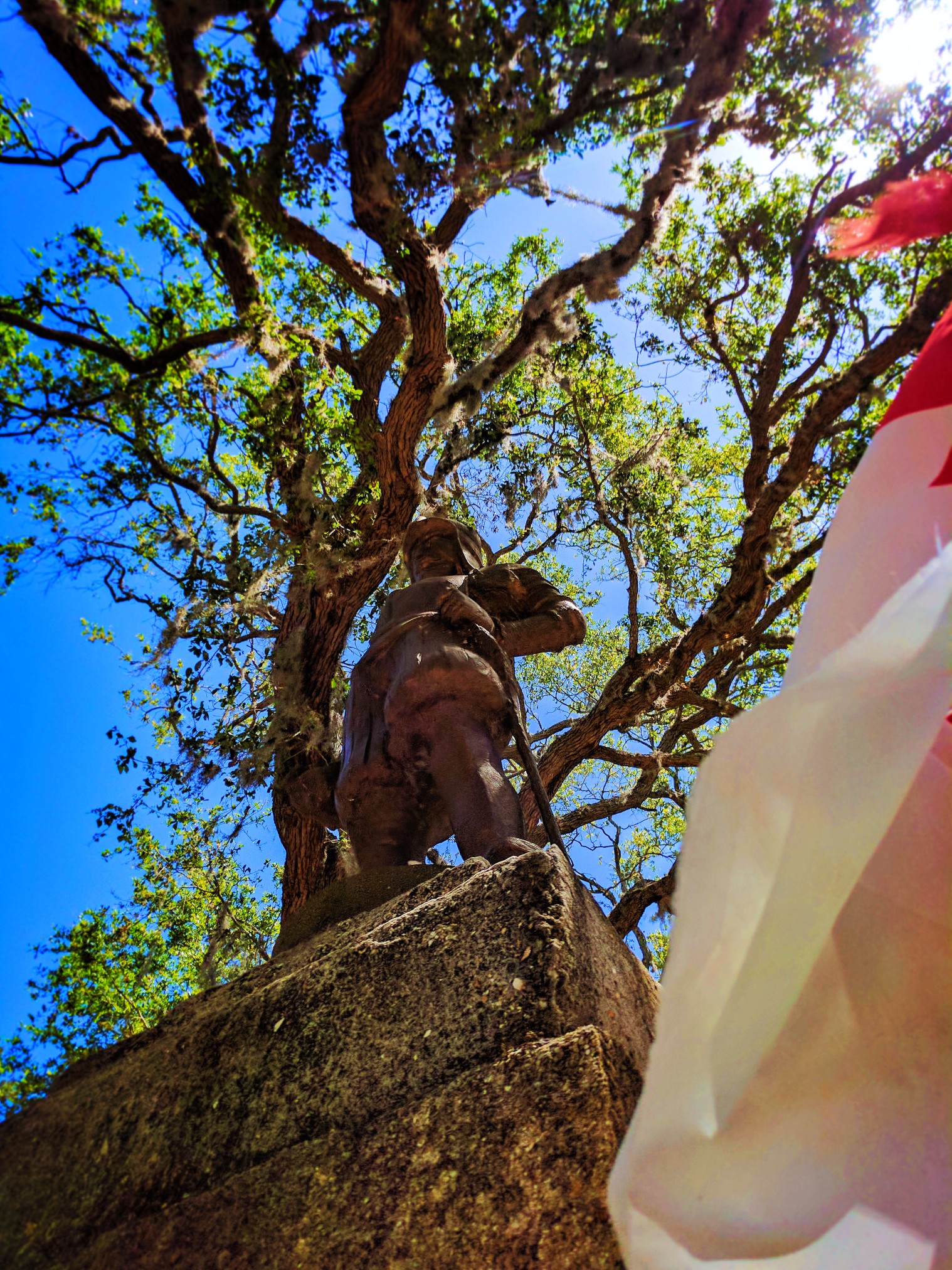
The legend of the Fountain of Youth became particularly associated with St. Augustine, Florida, which was founded by the Spanish in 1565. In the early years of the settlement, the Spanish built a small spring house near the waterfront to collect water from a nearby artesian well. This spring house later became known as the “Fountain of Youth” and was promoted as a tourist attraction in the late 19th and early 20th centuries.
In the 1860s, a dude named Walter B. Fraser purchased the land around the spring house and began developing it as a tourist attraction. He built a hotel, gardens, and various other attractions, and by the early 20th century, the Fountain of Youth had become a popular destination for tourists from all over the world.
During World War II, the Fountain of Youth Park was used as a training ground for the Coast Guard, and after the war, it was purchased by a group of businessmen who continued to develop the park as a tourist attraction. Today, the park covers 15 acres and includes a reconstructed Timucua Indian Village, a replica of a 16th-century Spanish galleon, and various historical and cultural exhibits.
While the legend of the Fountain of Youth has been debunked as a myth, the Fountain of Youth Park remains a popular destination for tourists in St. Augustine. Visitors can drink from the spring and explore the various

Other Florida Fountain of Youth Sites
While St. Augustine is the most well-known location associated with Juan Ponce de León and the Fountain of Youth in Florida, there is another location further south that also has ties to the Spanish explorer.
San Carlos Institute, a historic building in Key West, claims to be the site where Ponce de León first came ashore in the New World. According to legend, he landed in the area in 1521 while searching for the Fountain of Youth. The San Carlos Institute, which was founded in 1871 to promote the cultural and social welfare of the Cuban community in Key West, acquired the property where Ponce de León was believed to have landed in the late 19th century.
Today, the San Carlos Institute is a museum and cultural center that is all about the history and heritage of the Cuban community in Key West. While the connection between Ponce de León and the Fountain of Youth in this location is less well-known than in St. Augustine, it is still an interesting part of Florida’s history, even if it’s just part of the folklore and not legit history.
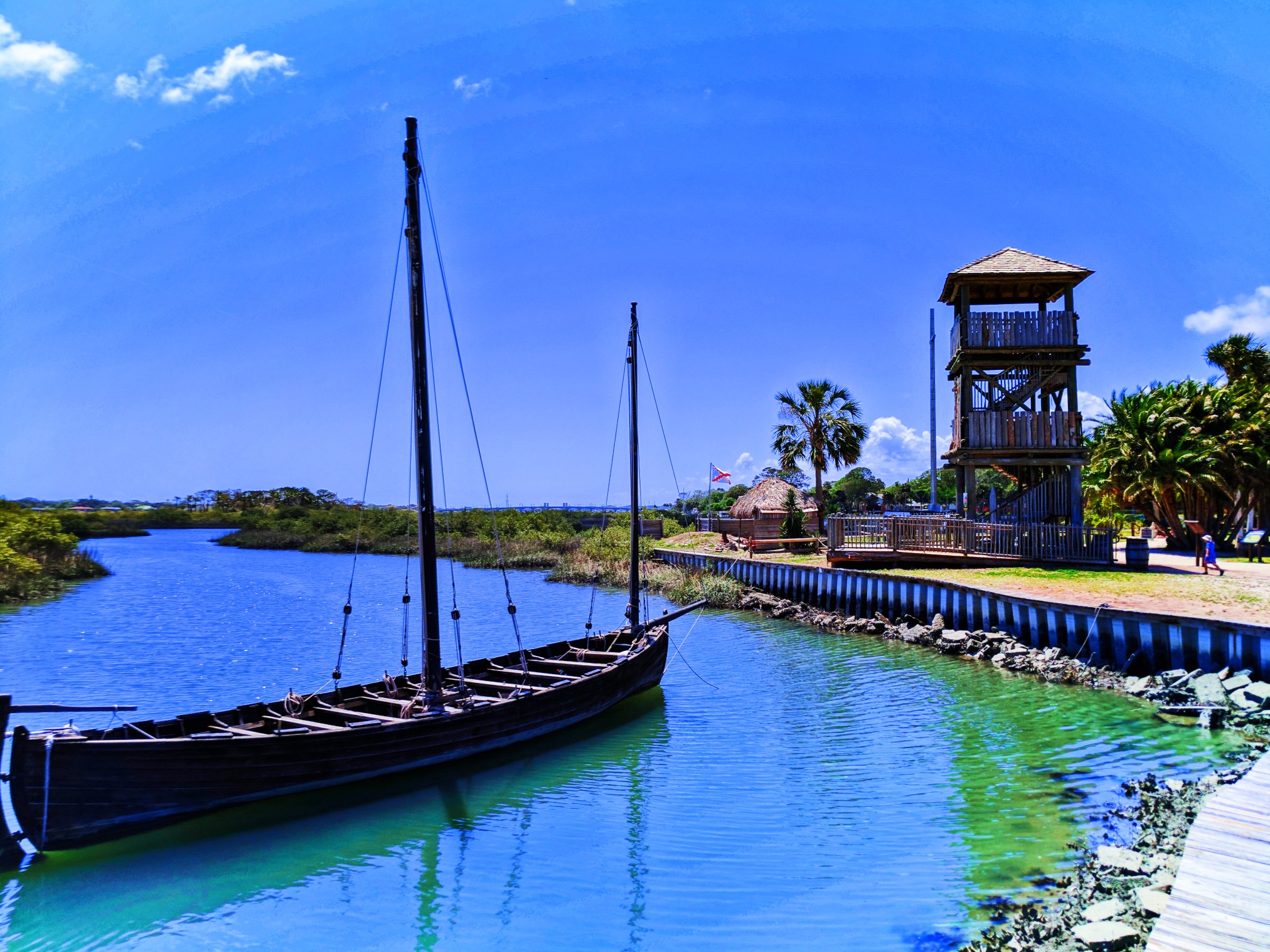
Is De Leon Springs State Park the original Fountain of Youth?
De Leon Springs State Park located in Volusia County, near Daytona Beach, is often associated with the Fountain of Youth due to its name and reputation for having crystal-clear waters. However, it is not believed to be the original Fountain of Youth sought by Juan Ponce de León. It’s funny because as you approach you see lots of Ponce de Leon stuff, even though it’s not related.
De Leon Springs State Park was originally known as Acuera Springs, which was an important site for the Timucua people who lived in the area for thousands of years. The springs were named after a chief named Acuera, who was known for his skill as a hunter and his hospitality to Spanish explorers.
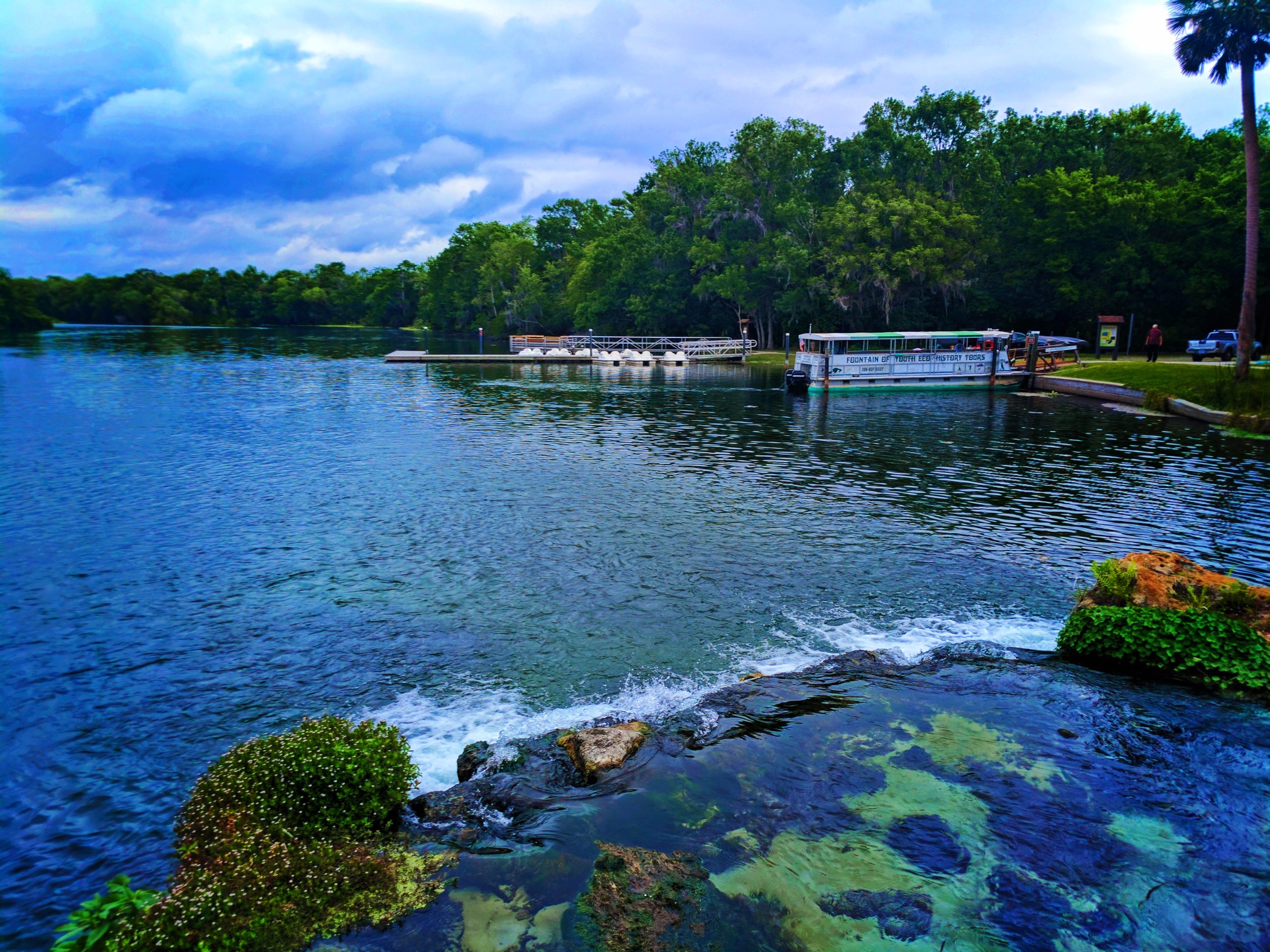
The park was later renamed after Juan Ponce de León due to its association with the Fountain of Youth legend. While there is no direct evidence that Ponce de León ever visited the springs, it is believed that he may have explored the area during his expeditions to Florida. Would Ponce de Leon have enjoyed seeing an elephant water ski here in the 1960s? Maybe, and maybe that would’ve been enough to keep him young.
The springs at De Leon Springs State Park are known for their clarity and year-round temperature of 72 degrees Fahrenheit, making them a popular destination for swimming, snorkeling, and diving. We really enjoy the ecotour boat that runs from the boat launch. The park also offers walking trails, picnic areas, and a historic sugar mill that dates back to the 19th century. The Old Spanish Sugar Mill is actually the main attraction here at the springs today: the Fountain of Youth in the form of pancakes.
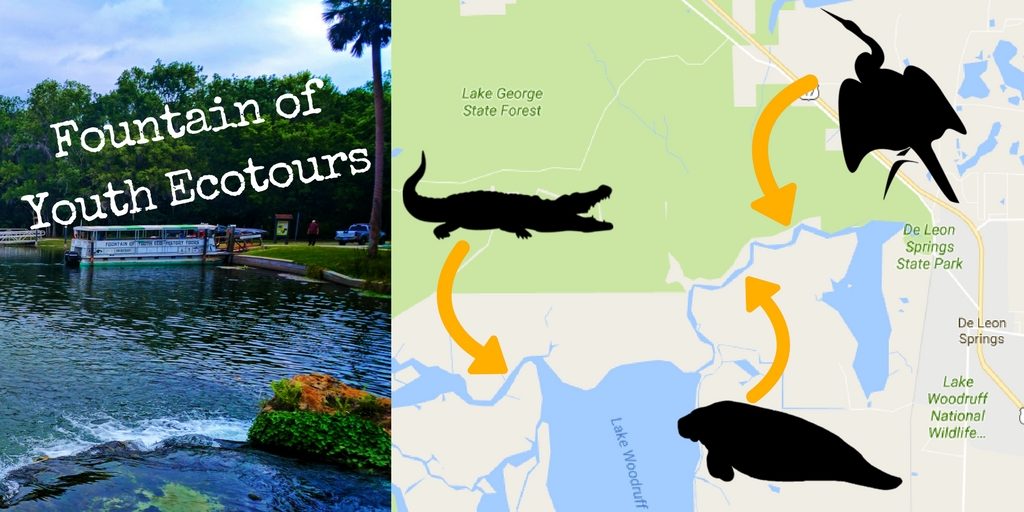
So that’s everything you need to know about the Fountain of Youth in St Augustine and all the mixed up legends surrounding it. It really is a fun spot and a totally unique thing to do when you’re here. If you have any questions I don’t answer here or have anything to share, I encourage you to leave a comment or send us a note. We’re happy to share others’ ideas and provide assistance for planning a trip to St Augustine!

